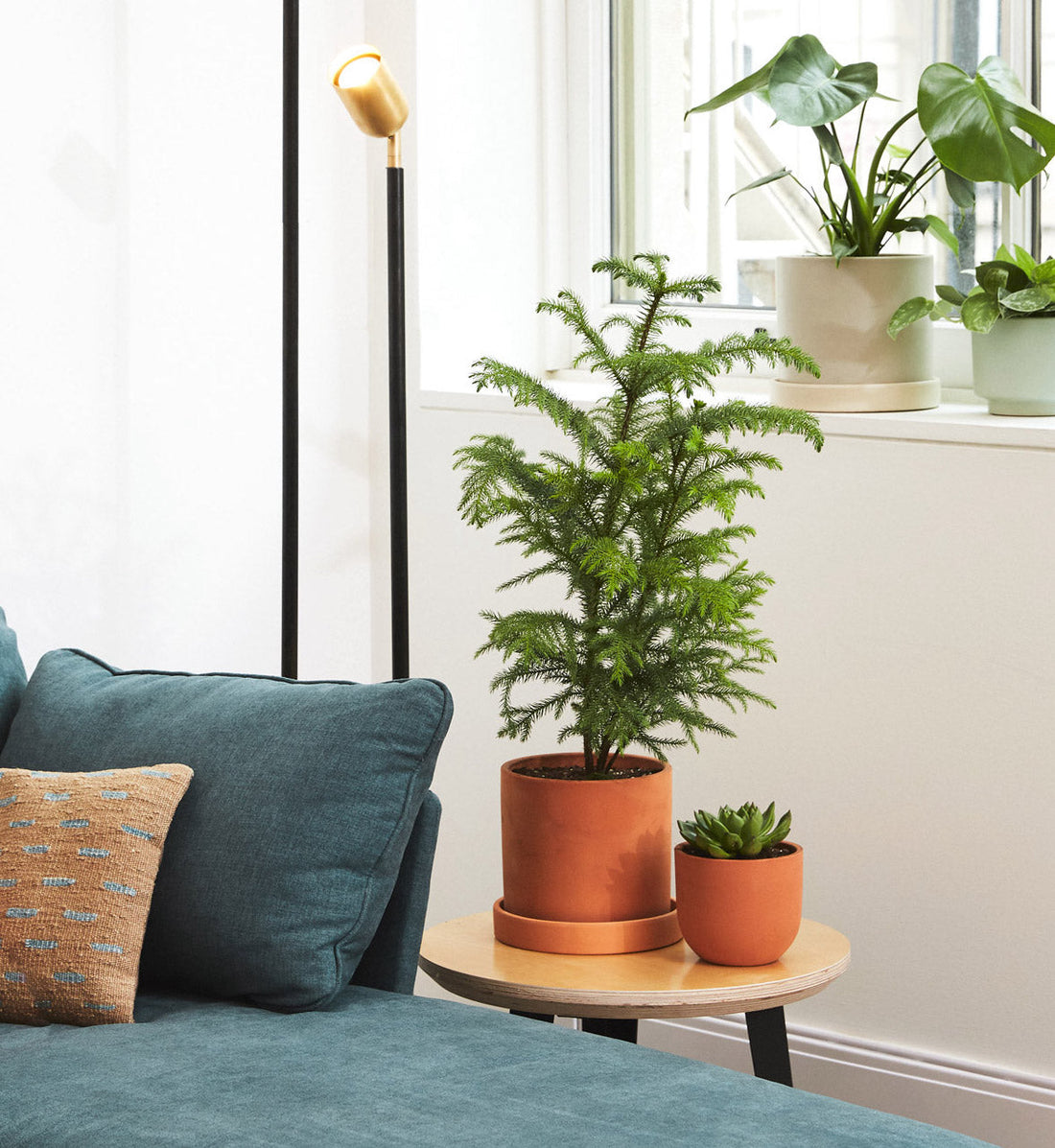
Plants 101
How to Care for a Norfolk Island Pine
Although a lively addition to your home all year round, the Norfolk Island Pine really shines as a live alternative for a Christmas Tree during the holiday season.

Learn how to care for the Norfolk Island Pine. Although a lively addition to your home all year round, this houseplant really shines as a live alternative for a Christmas Tree during the holiday season.
The Norfolk Island Pine hails from Norfolk Island, a small island in the Pacific Ocean between New Zealand and New Caledonia. Norfolk Island is a significant place for botanists because it is one of the only islands left in the world with several surviving fossil species. Over 50 of the Island’s native plants are endemic—they do not exist naturally anywhere else in the world. This ancient lineage of trees would have been lost to history during the Cretaceous Extinction Event, the same one that killed the dinosaurs and 75% of life on Earth, if it were not for a few members of the species surviving on Norfolk Island.
Despite its common name, the Norfolk Island Pine is not even a pine at all, but rather part of a more ancient lineage of cone-bearing trees in the family, Araucariaceae. Although most cone-bearing trees like pines are better adapted for cold conditions, the Norfolk Island Pine, or Araucaria heterophylla, is a tropical plant. In fact, Norfolks have been on the earth for millions of years before pines even evolved.
So it comes as no surprise why these cone-bearing tropical trees are great houseplants—their tropical nature makes them a fit for indoor conditions year round. Plus, their quirky yet symmetrical shape makes the Norfolk Island Pine a fun, live alternative to the traditional Christmas Tree, or in addition to. In fact, their propensity for growing in perfectly geometric shapes and patterns has given them the nickname "monkey puzzle trees."

As an added bonus, Norfolk Island Pines have evolved to be salt tolerant from growing on tropical islands with frequent ocean flooding. This is unusual amongst plants, and makes the Norfolks a potential plant for genetic study for identifying salt-tolerance mechanisms. Scientists study salt tolerance genes to help improve crops to grow in poor or previously-ocean-flooded soils.
How much sunlight does a norfolk island pine need?
Norfolk Island Pines thrive in medium to bright indirect light. They can benefit from a few hours of direct sun.
How often should you water a norfolk island pine?
Water every 1-2 weeks, allowing soil to dry out between waterings. A tropical plant, the Norfolk Island Pine's potting mix can be kept semi-moist, but not wet, which will lead to root rot. Expect to water more often when your Norfolk is in brighter light and less often in lower light.
Do norfolk island pines need humidity?
These trees can thrive in higher humidity, but normal room humidity is fine, too. If you have a humidifier, keep it close by or place your Norfolk Island Pine on a pebble tray.
Can I put my norfolk island pine outside?
Norfolk Island Pines prefer temperatures between 65°F–85°F (18°C–30°C). It’s best not to let it go below 60°F (15°C). If your outdoor temperatures do not dip below 60°F, you can put your Norfolk Island Pine outside. If your winter temperatures are on the chiller side, you can move your Norfolk outside in the summer, when it is consistently above 65°F.
Are norfolk island pines easy houseplants?
Norfolk Island Pines are generally easy houseplants but there are some common problems you can look out for:
SYMPTOM: Crisping, curling needles
CAUSE: Thirsty plant, underwatered or low humidity
SYMPTOM: Needle drop
CAUSE: Overwatering or not enough light
SYMPTOM: Yellowing or rotting stems
CAUSE: Overwatered
Plant pests can happen. Should your Norfolk Island Pine get spider mites, treat them as soon as they appear with weekly sprays of neem oil or an insecticide, and regular wash-downs until the infestation is gone.
Are norfolk island pines safe for pets?
The Norfolk Island Pine is considered mildly toxic to cats and dogs if consumed. If you have curious pets that are interested in your houseplants, the best practice is to keep your Norfolk out of their reach, or opt for a non-toxic houseplant instead.

Words By The Sill
Empowering all people to be plant people—a collection of articles from The Sill's team of plant experts across a variety of plant care topics to inspire confidence in the next generation of plant parents. Welcome to Plant Parenthood™.
Do Some Plant Shopping